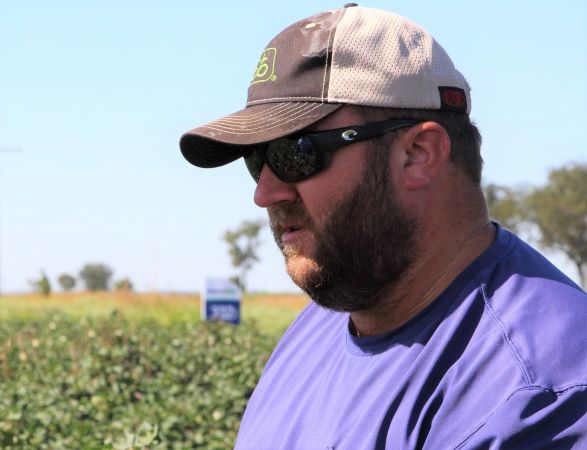The shift is on to …Early Maturing Varieties
To Texas consultant Rodney Sams, the key to keeping production costs low in his area lies with proper variety selection. In fact, he recommends that his growers move toward early maturing cotton varieties and away from late-season varieties.
“In a normal growing season in our area, early-season varieties will keep the grower’s input costs lower than those of a late-season cotton,” says Sams, who lives in Bandera, TX. “For example, you use less growth regulator on early-season varieties than you do on late-season varieties. Additionally, irrigation and pest control costs are less since you don’t have to water or spray as long with early maturing cotton as you do with late-season varieties. Also, you normally have better fiber quality since you can get your early maturing cotton out of the field by the first week of September and avoid the late-season tropical storms.
“I recommend that growers in our area need to have their cotton out of the fields around the first week of September. September and October are usually wet months and an early-season variety is ready to be picked in late-August.”
Sams says his growers now have competitive early-season varieties that they can plant. For example, his growers have been planting CG 3520B2RF. In his second year of recommending this CROPLAN GENETICS cotton to his growers, Sams is impressed with its performance.
“In 2007, CG 3520B2RF was easily managed and it held up through the heavy rainfall and limited sunlight,” he explains. “It held fruit longer, was less expensive to manage and was easier to defoliate than other competing varieties.”
In addition to being a less expensive crop for his growers to produce, Sams says it provides high yield potential and excellent fiber quality. “CG 3520 averaged two and one-quarter bales per acre and went into the loan at up to 58 cents,” he says. “The fiber quality was excellent.”
CG 3520B2RF is an early maturing, semi-smooth-leaf cotton variety with high-yield potential and premium fiber quality. In tests from across the Cotton Belt in 2007, average fiber quality measurements were 4.2 micronaire, 37.8 staple and 27.4 strength.
The variety is a Bollgard II/Roundup Ready Flex cotton. These latest transgenic traits help growers better manage lepidopteran and weed pests all season long.
“I think the Bollgard II/Roundup Ready Flex technologies are great,” says the Texas consultant. “They give growers a wider herbicide application window and broad-spectrum worm control. I seldom have to spray CG 3520 for bollworms.”
Sams, who has been a cotton consultant since 1980, also is impressed with the variety’s seedling vigor. “It will come out of the ground charging,” he says.
“And it performs just as well at the end of the season. It is more storm proof than the later maturing varieties. It holds in tough while the later season varieties will be all over the ground.”
Sams’ growers first planted CG 3520 in 2006. “That year, we had normal weather conditions for our area and the cotton averaged nearly three bales per acre,” he says. “I will recommend that all my growers plant some of their acreage to CG 3520 in 2008 because we can manage it better and the production costs are less. It saves you money and makes you money.”
Caption:
Rodney Sams









